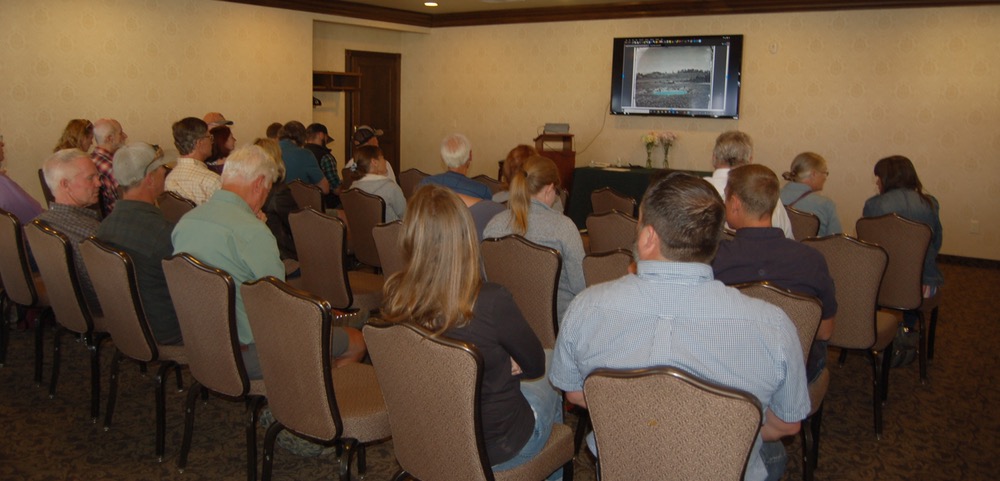As mentioned yesterday, the various ‘business incentives’ offered by the State of Colorado, and listed by the Colorado Office of Economic Development and International Trade on their website, were reported by journalist Brian Eason in a recent Colorado Sun article as totaling $6.6 billion annually. We noted that the entire 2019-2020 state budget for K-12 education comes to about $6.2 billion.
(You can download the 42-page Colorado budget summary here.)
We also noted that it’s not only the state government that’s falling all over itself to hand out corporate welfare checks in the name of ‘economic development.’ In the recent past, our local elected officials here in Archuleta County have been more than eager to distribute taxpayer revenues and other types of subsidies to worthy (or unworthy?) corporations.
A planned $79.7 million handout is currently under discussion at Town Hall, in the form of an “Urban Renewal Authority” tax credit scheme proposed by the Springs Resort and BWD Construction. The Archuleta Board of County Commissioners have already expressed their enthusiastic support for the scheme, with Commissioner Steve Wadley stating publicly: “It’s gonna bring a lot of money to this place…”
Indeed, if the plan were to play out as projected by Mike Anderson of Colorado Springs-based Anderson Analytics — the consultant hired by the Springs Resort — the community would benefit from hundreds of new jobs and millions of dollars in new tax revenues as a result of the proposed 27-acre development. You can download Mr. Anderson’s optimistic 73-page ‘economic impact’ study here if you haven’t already done so.
The catch is that, for the first 25 years of the proposed ‘Urban Renewal Area’, millions of dollars in newly collected taxes would go back into the pockets of the developers, to reimburse them for their investment in new streets and infrastructure — expenses normally paid for, in every previous Pagosa Springs subdivision, by the developers themselves. This would include, according to Mr. Anderson’s report, $30.1 million that would have otherwise gone to the Town during those 25 years, and $32.8 million that would have otherwise gone to the County government. Every special district in the community — health services, fire, water districts, library, school district — would also forfeit tax revenues to the developers, subject to ‘negotiations’ of some type. (No one I’ve spoken to at the Town or County seems to know that these ‘negotiations’ might entail, or what details of the tax giveaway, exactly, could be subject to negotiation.)
Here’s a diagram from Mr. Anderson’s report:
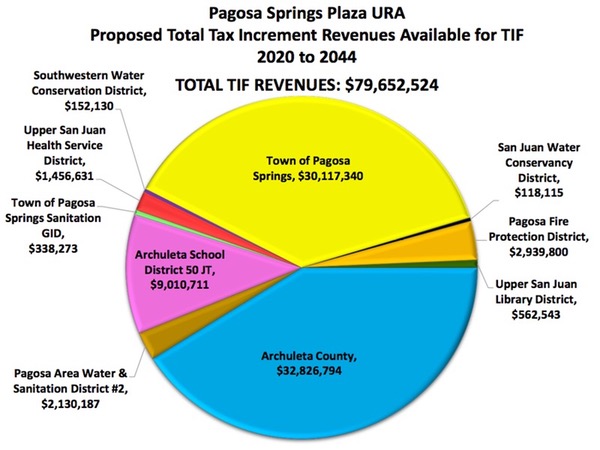
Anyone who reads the Colorado Urban Renewal Law — CRS Title 35, Article 25, which you can download here — with an open mind, can easily see, from the very first paragraph, that the law was never intended to subsidize the construction of commercial or residential subdivisions on pristine, vacant land. But when a government has a chance to give away millions of dollars in taxpayer revenues in the name of ‘economic development,’ the actual intention of a Colorado law can suddenly seem unimportant. It can seem even less important if other rural Colorado communities, eager to subsidize wealthy corporations, have likewise ignored the law’s stated intention.
The Pagosa Springs Town Council — which has the ultimate authority to facilitate this tax giveaway, or to decide it’s not a good idea — has met at least twice with consultants representing the developers, but has not yet scheduled a work session to hear from the general public and the existing business community — the existing business community that’s been regularly submitting their property and sales and lodging taxes, for who knows how many years, without receiving any direct handouts from the Town government.
I am hoping a true “community work session” will be scheduled by the Council in the near future.
In the meantime, the developers — represented by Springs Resort principal David Dronet and BWD Construction owner Jack Searle — held their own open meeting with members of the public last night in the Springs Resort conference room, and attracted a rather impressive audience… considering that no refreshments were provided. Perhaps 35 people?
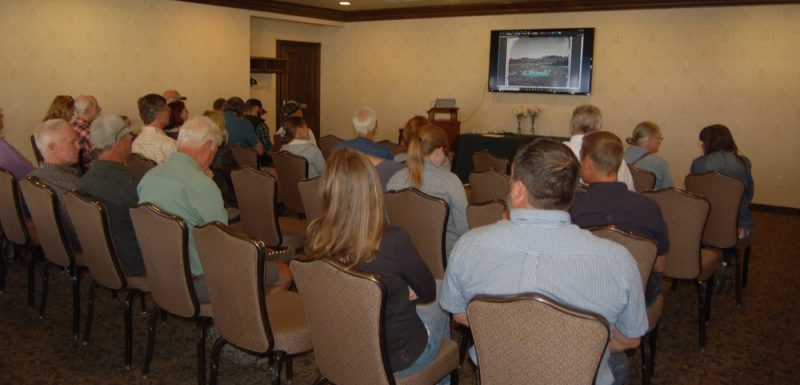
Mr. Searle sat quietly for most of the evening and allowed Mr. Dronet to handle the presentation of the proposed 27-acre project, which would include (if we are to believe the projections) a large central ‘public plaza’ surrounded by a thriving hotel, offices, restaurants and retail outlets, plus perhaps 230 housing units of various sizes (and prices) spreading out towards the southern part of the vacant property.
The travertine rock meadow in question has been vacant, as far as we know, for at least 10,000 years… despite of numerous ‘plans’ put forward for its development… plans dating back to at least 1883 when Army surveyor Benjamin H. Smith sketched out a map for Pagosa Springs, eight years before the town was officially incorporated. In his map, Mr. Smith included several areas that appeared to be intended for ‘public parks’ — and one of those park-like areas was tucked into a curve in the San Juan River and surrounded the Great Pagosa Hot Spring pool (shown in blue). Mr. Smith labeled the area “Henry Footes Valentine Scrip.”
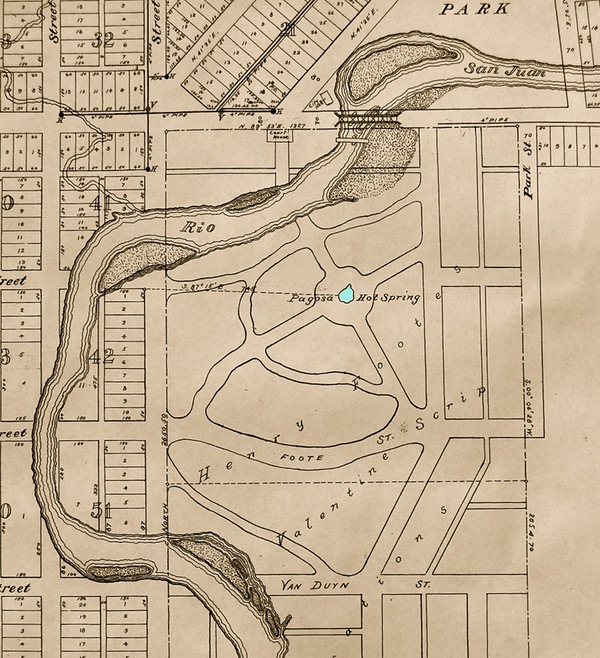
In 1875, Henry Foote had filed for a “Valentine scrip” in Del Norte, Colorado, claiming the rights to forty acres surrounding the Great Pagosa Hot Spring.
Based on what I’ve read in history books, I believe there was once a plan was to build a federal convalescent hospital next to the Great Spring, to allow Civil War veterans suffering from wounds and war-related diseases (and, no doubt, from PTSD) to soak and recuperate in the “healing waters.” The hospital was never built, however, and we can easily understand why; transportation to and from Pagosa Springs, in 1883, was not exactly convenient for a suffering Civil War veteran.
While researching the water rights a few years back, I came across an old newspaper article from the 1980s — about a developer who had grand and exciting plans for the Henry Footes Valentine Scrip area. But ultimately, nothing came of his plan.
Then, in 2008, the Whittington family purchased the Springs Resort and the vacant property to the south — the still-vacant Henry Footes Valentine Scrip — and proposed a $250 million resort complex. The Pagosa Springs Town Council eagerly endorsed Bill Whittington’s ambitious vision.
But nothing came of it.
By 2012, the vacant property had gone into foreclosure and was back in the hands of previous owners Matt Mees and Bill Dawson, who then proposed a plan that looked like this:
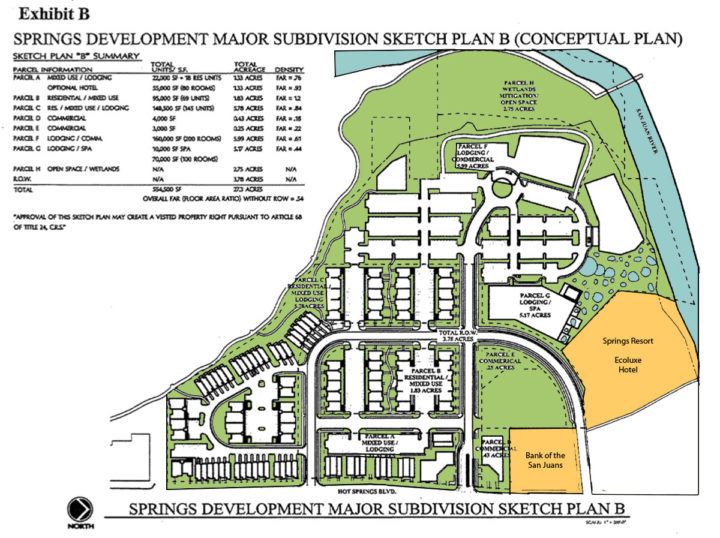
The Town Council eagerly signed a 10-Year Vested Rights Agreement with Mees and Dawson, allowing the partnership to build up to 232 dwelling units on the vacant 27 acres.
But nothing came of it.
Last night, developers Jack Searle and David Dronet described yet another plan for the vacant acres… which they hope the community will underwrite with $79.7 million in tax subsidies…

